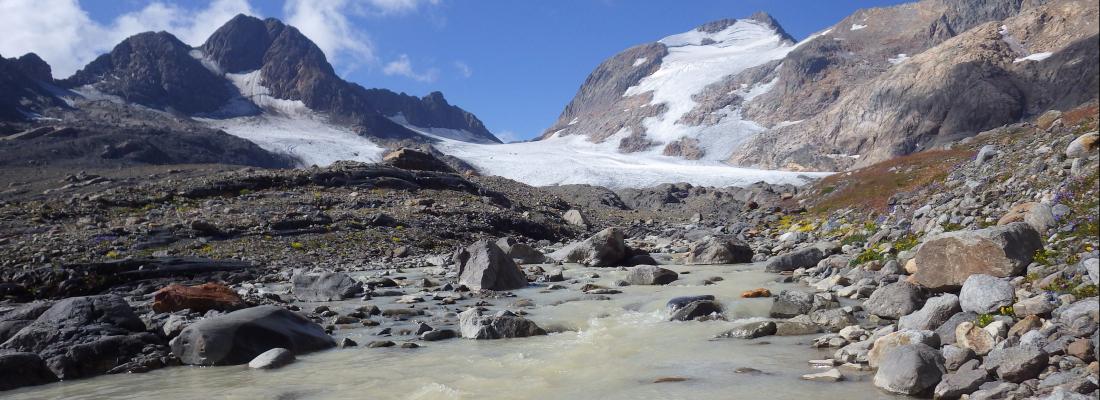Glacier retreat impacts alpine river habitats, leaving biodiversity poorly protected
Published on 22 May 2023

Methods
Projections of river invertebrate distributions were developed for the period 2020-2100 at 10-year intervals for all glaciated subcatchments in the European Alps above 2,000 m, divided into 10x10 m river ‘segments’.
These projections were driven by a glacial influence model that calculates the proportion of glacial ice cover in each river segment’s upstream catchment. Future glacier extent was predicted using the Global Glacier Evolution Model. Projections for 15 species were then developed using species distribution models by integrating 656 biological samples with a set of river environmental parameters comprising glacial influence and hydrological, hydraulic and hydrochemical characteristics.
Key findings
Glacial influence on river ecosystems is projected to diminish to the end of the 21st century in all river basins in the Alps.
Projections of river network structures and glacial influence now exist for the whole of the European Alps from 2020 to 2100. Most alpine species will see the available surface area of their habitats decrease at European scale by 2100.
In 2100, many of the most suitable areas for glacial cold-water invertebrates will lie outside current protected area networks. This raises concerns over conservation, because locations where glaciers are still in existence in 2100 may also be priority areas for human activities such as hydropower and skiing. More intensive monitoring of alpine river biodiversity is urgently needed so that the distributions of a wider range of aquatic species can be modelled and used to inform conservation decisions.
These advances in predictive capability can benefit the study of other mountain ranges, where local-scale predictions are currently available for only a small number of species.
The work described here was carried out by scientists from the UK, Austria, France, Italy and Switzerland, building on multiple studies dating back to the 1990s.
The full report is available online:
https://www.nature.com/articles/s41559-023-02061-5
For more information, contact: l.brown@leeds.ac.uk
